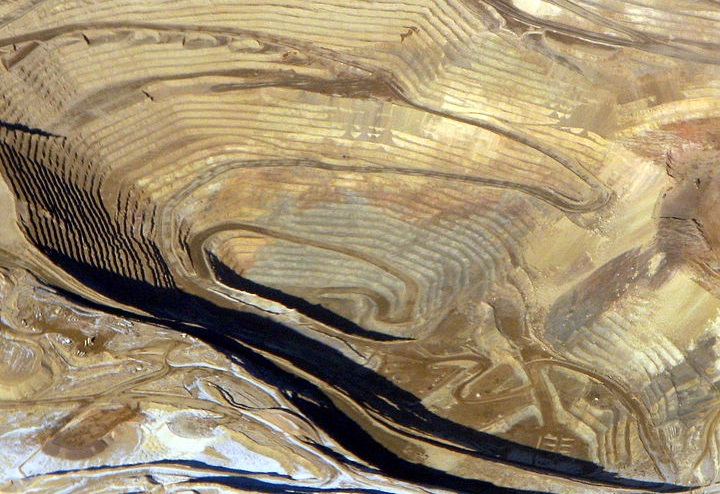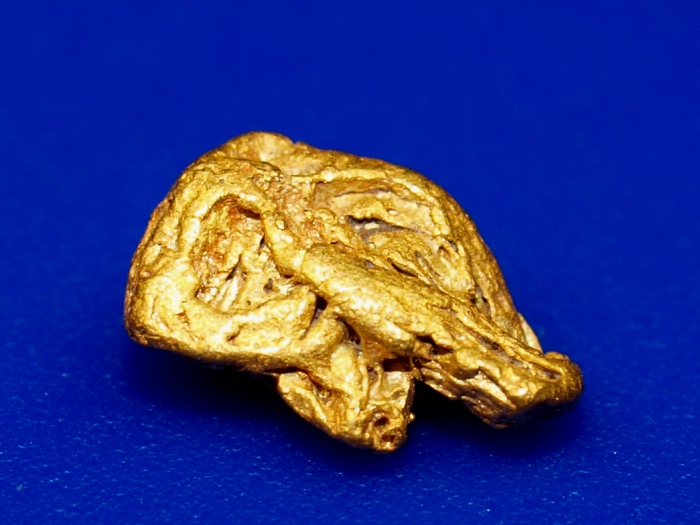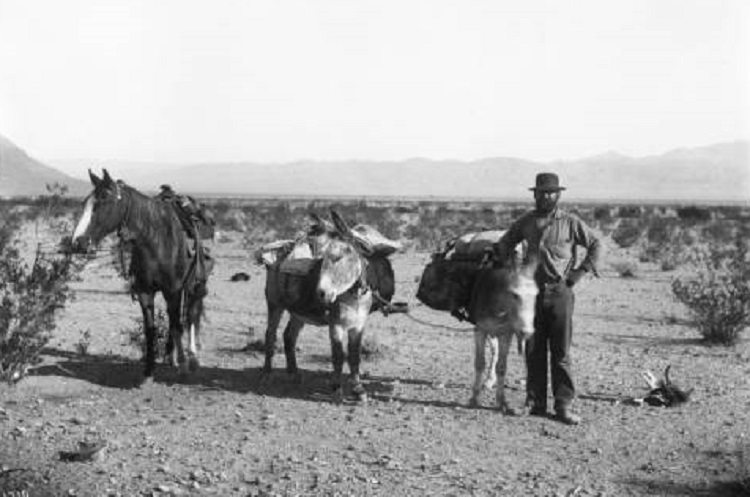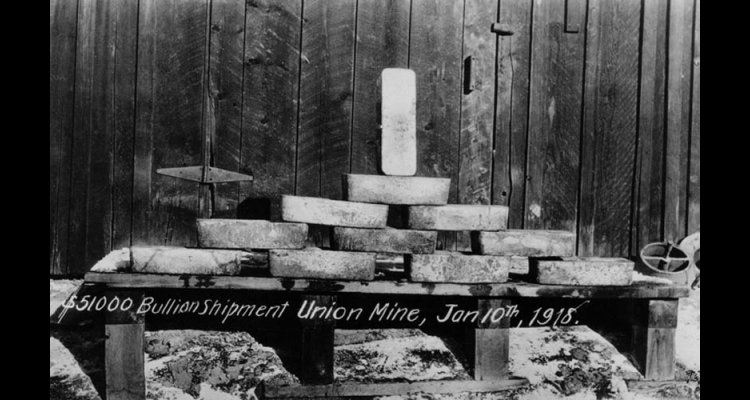
Nevada has been the largest gold producers in the United States for decades now. There are numerous commercial mines throughout the state that result in a considerable annual production of both gold and silver. This is a statement to how rich the state is in precious metals.
The commercial metal mines in Nevada are one thing, but is Nevada a good place for small-scale prospecting too?
It is important to note that Nevada has harsh conditions such as extremely hot summers, lack of water, rough roads and the abundance of snakes and mountains lions. There aren’t a lot of people in this state, and there are large areas with very few people. Aside from Las Vegas and Reno, most of the other towns in Nevada are small with populations of only a few thousand people or less. There are lots of places here where you can spend all day without seeing another soul.
All these conditions deter many small-scale prospectors from venturing out to prospect for gold. This also means that the state has been explored much less than some other places, and there are still gold in many areas waiting to be discovered. We are going to discuss some of Nevada’s richest gold and silver strikes below.
1. Manhattan Mine
Silver and gold were discovered in the Manhattan Gulch on the slopes of Bald Mountain in 1866. This created a buzz and mining activity in the area started in earnest. However, it only took five years to deplete the ore and the area was abandoned. A new and much richer gold vein was discovered in 1905 which brought back miners to Manhattan. The mining continued until during the Second World War when everything was stopped. Today there are several small-scale mining operations to the west of the original Manhattan Mine. You can also prospect and finds lots of gold in the many small gulches scattered around the area.
2. Round Mountain
The Round Mountain Gold Mine in the famous Round Mountain is currently one of the largest gold mining operations in the country. It located in Nye County north of the historic Tonopah area. Round Mountain is rich in the crystalline gold specimen which are world-famous to mineral collectors. This is still an active mining operation, but there are unclaimed areas in this area that are auriferous.

3. Tonopah
The little town of Tonopah is located between Las Vegas and Reno in Nye County. Silver ore was discovered here in 1900 bringing in thousands of miners in the next few years. The mines that were formed were the most productive silver and gold mines in the state for decades. Eventually, after the Second World War, the mines were closed once the ore was exhausted. Today, much of the mining is played out, but there are still some active operations too.
4. Rye Patch
Rye Patch in Pershing County is one of the best places where you can find relatively gold nuggets close to the surface, making it the best-known prospecting area for small-scale prospectors. The Rye Patch placers sit on the eastern slopes of Majuba Mountain. The area is famous for shallow gold deposits that can be extracted using metal detectors. The lack of water in the area makes dry washing popular as well, but most prospectors that come here bring along their metal detector.

Many of the gold nuggets found at Rye Patch have interesting shapes and textures that are very valuable to mineral collectors.
5. The Carlin Trend Deposits
The Carlin Trend Deposits was named after its main gold mine, the Carlin mine which produced the Carlin-type gold. This deposit was completely unknown until the 1960s when tiny gold was discovered within an ore that was previously ignored by miners. Today the region is still rich in gold and has been explored heavily by commercial miners. Most of Nevada’s largest gold mines today are found in this area of Northern Nevada around Battle Mountain and Elko. The gold is invisible; too small to see with the naked eye. These deposits are best left to the professionals.
6. Mountain City
Mountain city was established in 1869 following the discovery of gold in the area by Jesse Cope. A year letter the Rattlesnake mine was established which had a higher yield for both silver and gold. This led to the growth of a small boom town to support the mining. However, in five short years, the rich ore had been exhausted and the miners left the town. In its place ranching industry sprang up in the area with homestead being established around town. Today, the lands around the old town site still have the potential for gold production given that no serious mining has been done in the area since the 1870s.
7. Searchlight
Mining in the Searchlight Mining District began in 1897 following the establishment of the Duplex mines. At its peak, the town had about 44 gold mines. Most of the mines closed down in the 1920s due to lack of rich ore. The land in the area is mainly managed by the BLM and some of it has rich gold areas that are unclaimed.
Also Read: Southern Nevada Gold – A Mining Boom in Searchlight

An early day miner searches for gold in the harsh Nevada desert.
8. Goldfield
Goldfield is located in Esmeralda County, Nevada. The town began as a boom town in 1903 and was home to several gold mines that operated until the 1940s. Although the days of plenty are long gone, Goldfield is still a very attractive place for gold miners. The area around the old gold mines still contain some gold and there is still a lot of potential in this remote mining town.
9. Rhyolite
Rhyolite is located in the Bullfrog Mountains in Nye County. Gold was discovered in the region in 1904 and brought in miners from many other places where early gold discoveries had been mined out. The new arrivals quickly established a small boom town to support the mining efforts in the area. Eventually, the mined was closed in 1911 after the rich ore was depleted. Today Rhyolite is a ghost town but the area where it sits still has lots of potential for producing gold.
10. Comstock Lode
This was one of the richest silver discoveries on Earth. The Comstock Lode was discovered in 1859 on the slopes of Mount Davidson. The mining began in earnest and continued until 1880 when the rich ore was exhausted having produced millions of ounces of both silver and gold. Mining continued on small scale in the area until the 1940s before peaking again in the 1970s and 80s. Today the area is still active and due to the extensive ore deposits it will likely be a producer of precious metals for years to come.

Silver bullion recovered from the rich mines of the Comstock Lode.
11. Berlin
In 1863 silver was discovered in the Union Canyon. This brought some excitement in the area but the ore wasn’t very rich and soon some of the early miners in the Canyon started venturing outside in search for new discoveries. The Berlin mine was then established in 1869 which led to a significant boom in the area with the mine producing both silver and gold. At the turn of the century, the ore was depleted and the mining activity shrunk considerably. Today the area around Berlin is still a very attractive site for gold prospecting, and the remoteness of the areas almost ensures that it hasn’t been prospected very hard in recent years.
Next: Early Spring Gold Prospecting in the Desert

